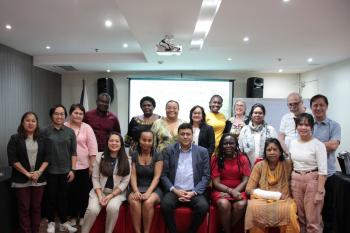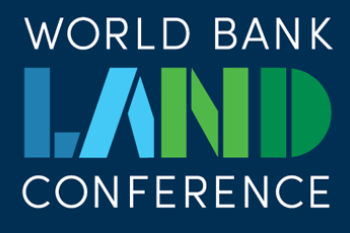STDM to facilitate the Recordation of Land Rights in post-conflict Eastern DRC
In post-conflict Eastern Democratic Republic of Congo (DRC), the struggle for control over land, disputes over land and lack of secure land rights for great parts of the rural population constitutes deep-rooted structural causes for human suffering, violence and ecological degradation in the region. Up until 2006, Luhonga in Masisi Territory, North Kivu Province, suffered severe land conflicts and frequent forced displacements due to disputes between powerful concessionaires and local communities. In 2009, through UN-Habitat’s land mediation interventions, one such concessionaire agreed to a participative re-measurement and demarcation of 24 hectares of land. The concessionaire subsequently released it to the local inhabitants of Luhonga and this brought about peaceful cohabitation between the villagers and concessionaire. This area today hosts over 600 returnee households of previously displaced inhabitants of Luhonga.
Based on a land use plan, participatively developed by UN-Habitat with inputs from Luhonga’s community members, the local administrative authority and customary chiefs, the Social Tenure Domain Model (STDM) has been acknowledged by North Kivu’s Provincial Land Ministry as well as the community members as an all-important tool for recording the land rights of 609 inhabitants in Luhonga through the process of participatory enumeration. During a half-day ‘Land Use Plan Validation and STDM Awareness’ workshop that was held on 22nd January 2015, the community members strongly agreed that the envisioned ‘Certificates of Ownership’ that are to be generated by the STDM tool at household level will not only provide them with a locally recognized form of documentary evidence of land ownership, but will also facilitate easier access to financial services for their socio-economic development.
Community members are taken through Luhonga’s land use plan by Claudine Lukoki from UN-Habitat, DRC (left). Photo: John Gitau, UN-Habitat/GLTN
Based on the initial results of the STDM pilot, there will also be an opportunity to apply the tool in an additional 30 hectares of land that the community has been collectively allotted for farming and this will only be after apportioning land to each household.
The land mediation process in Luhonga is a joint project between UN-Habitat, FAO and UNDP which aims for a comprehensive approach towards securing land tenure. The overall goal is to improve land governance for peace and stability and to set up a conducive environment for both economic and social recovery in a post-conflict DRC.
Based on the initial results of the STDM pilot, there will also be an opportunity to apply the tool in an additional 30 hectares of land that the community has been collectively allotted for farming and this will only be after apportioning land to each household..
The land mediation process in Luhonga is a joint project between UN-Habitat, FAO and UNDPwhich aims for a comprehensive approach towards securing land tenure. The overall goal is to improve land governance for peace and stability and to set up a conducive environment for both economic and social recovery in a post-conflictDRC .
This content is too technical and may not appeal to the regula reader.


